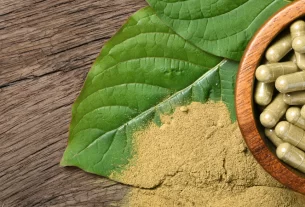We often pay more attention to our fingernails rather than toenails. However, it is crucial to understand that toenails are very important and it plays a huge role in signaling your health condition as well.
Generally, toenails are transparent, and slightly translucent hue in most cases. However, they can seem yellow, green, blue, purple, or black at times. You may even notice orange toenail. Continue reading this article to understand more about toenail discoloration.
A variety of factors may cause toenail discoloration. These might range from mild injuries to potentially life-threatening illnesses. Another condition related to toenails is an ingrown toenail. In case you are looking for a podiatrist in Irvine, Orange Country, then you must contact Dr. Sima Soltani’s Podiatry Office.
With over 20+ years of experience, Dr. Sima and her team are experts in dealing with various foot-related problems. They can treat everything from hammertoe to an ingrown toenail. Ingrown toenail laser treatment, stem cell therapy, bespoke orthotics, bunion surgery, and other procedures are among their specialties. Therefore, contact them right away to schedule an appointment and receive treatment as soon as possible.
Causes of changes in toenail color and their remedy:
As statedabove, the color of your toenails might change to different colors. Several factors cause these color variations. Let us look at each one separately including their remedy:
- Nail Fungus:
- Causes –
- One of the most common causes of toenail discoloration is nail fungus.
- Dermatophyte is the most prevalent organism that promotes toenail fungus.
- Dermatophytes depend on the keratin in your body to grow.
- Further, frequent sweating, walking barefoot, and small cuts near your nail may also cause nail fungus.
- Your toenail color may change into yellow, reddish-brown, green, or black if you have nail fungus.
- Remedy –
- Antifungal medicines, which you can get online, usually work effectively for mild fungal infections.
- Look for clotrimazole or terbinafine in the ingredient list.
- However, you must consult a professional if you have a serious fungal infection that is painful because several fungal infections can cause irreversible nail damage if left untreated.
- Injuries:
- Causes –
- Your nail discoloration could be a sign of a subungual hematoma if you have recently dropped anything on your foot or stubbed your toe on something.
- Further, wearing shoes too tight shoes can also potentially cause this pain.
- This will turn your nail red or purple and eventually fade to a brown or black tone.
- It is also likely that the damaged nail may be painful and tender.
- Remedy –
- Subungual hematoma normally cures on its own in a few days. Meanwhile, attempt to keep the affected foot as still as possible.
- To aid relieve the pain, wrap an ice pack in a towel and apply it to the nail.
- However, while the injury itself heals rapidly, the discolored nail will take six to nine months to grow out entirely.
- In case, the discomfort and pressure are not getting any better after a few days, make an appointment with a healthcare provider.
- Nail Polish:
- Causes –
- When you apply nail polish to your nail’s surface, it could absorb and taint deeper layers of keratin.
- Even one week of polish on your nails might cause discoloration.
- Further, nail hardeners including formalin, dimethylurea, or glyoxal also cause nail discoloration.
- Remedy –
- In this case, the only remedy to get rid of discolorationis to stop painting your nails.
- Even a couple of weeks’ sabbatical can solve the problem.
- Health Condition:
- Causes –
- At times, nail discoloration might be a sign of a more serious health problem.
- Yellow-brown stains under your toenail can be due to psoriasis. Similarly, if the bottom half is white, while the top part is pink, it is due to kidney failure.
- Remedy –
- During these conditions, you need to seek medical assistance.
Yellow Nail Syndrome:
Yellow nail syndrome is a very rare disorder in which your nail turns yellow. Generally, this condition affects people above the age of 50. However, experts are not sure what exactly causes this syndrome.
If you have this syndrome, yournails will not only turn yellow, but may also look curved, thick, expand at a slower rate than usual, etc. Your nail may further turn black or green.
Doctors and experts noticed that it frequently happens in conjunction with other medical problems like lung disease, lymphedema, pleural effusions, sinusitis, and many others. Yellow nail syndrome has no therapy, though it does sometimes go away on its own.
Ingrown Toenail:
An ingrown toenail is a foot condition caused by the corner of the toenail growing into the skin.The commonly affected area is the big toe.When people cut their toenails by tapering its corner, it may cause ingrown toenails. Your toenail can grow into your skin if it curves with the curvature of your toe.
An ingrown toenail can happen to anyone. However, adolescents, athletes, andpeople with health conditions like diabetes, poor blood circulation, etc., are at a higher risk.
It can take some time to get rid of toenail discoloration and ingrown toenail. However, once you have taken care of the underlying problem, you must take necessary precautions to keep it from reappearing.




